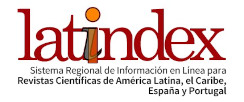INTERIORIZATION OF FEDERAL INSTITUTES AND UNIVERSITIES: AN ANALYSIS OF STUDENTS PROFILE AND THEIR POSSIBLE EFFECTS
Keywords:
Multiple Correspondence Analisys (MCA). Higher Education. Public Policies. Regional Development.Abstract
This paper analyzes the typology of the regional division of the areas of higher education that the students of the interior campuses opened after 2003 of Federal Institutes and Federal Universities are inserted. Furthermore, it analyzes the profile of these students in each area of education within regions. Therefore, descriptive statistics and multiple correspondence analysis are used. thus, it was verified that the students of these new campuses in the North, Northeast and Center-West Regions, are, mostly, teacher training courses. On the other hand, students from the South and Southeast are concentrated in areas directly to the production of goods and services. Moreover, students of teacher training curses need greater support of public policies for access and stay in higher education; Since this area concentrates students from public schools, quota holders, black and mulatto. Engineering and production students, on the other hand, seem to be those with the least need of these policies, since they come from private schools, are not quota holders, do not receive social support and are white and yellow.Downloads
Published
2020-10-25
How to Cite
Barbosa, P. H. F., & Campos, L. H. R. (2020). INTERIORIZATION OF FEDERAL INSTITUTES AND UNIVERSITIES: AN ANALYSIS OF STUDENTS PROFILE AND THEIR POSSIBLE EFFECTS. Revista Brasileira De Gestão E Desenvolvimento Regional, 16(3). Retrieved from https://www.rbgdr.com.br/revista/index.php/rbgdr/article/view/5892
Issue
Section
Artigos
License
Authors who have their papers accepted and published in the Brazilian Journal of Regional Management and Development must agree to the copyright policy CC BY https://creativecommons.org/licenses/by/4.0/.
If the article is accepted for publication, the copyright is automatically assigned to the Brazilian Journal of Regional Management and Development.

















